A story relating to persons or events and popularly believed to be true is considered a myth which is differentiated from a legend which is considered to be an historical event. The word ‘legend’ is derived from ‘legenda’ meaning ‘to write.’ ‘Myth’ is derived from the Greek ‘mythos’ meaning ‘discourse.’ Originally, the legends were transferred from one to the other generation by word of mouth while myths were transferred in written form. Mythology is the collection of myths spread far and wide covering a long, geographical range and surviving over centuries covering a wide range of time. It is, therefore, almost impossible to enjoy. For example, the English literature without having a fair idea of the Greek mythology which in any way influenced it deeply. Three main sources of Irish mythology are the manuscripts preserved in different libraries. They include: Labor nah Uidre in the Royal Irish Academy, Book of Leinster in the library of Trinity College, Dublin and Rawlinson Manuscript in the Bodleian library at Oxford University.
1. The Legend of Tuan mac Carell
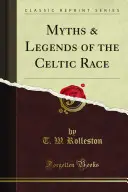
The source of The Legend of Tuan mac Carell is an AD 1100 manuscript titled Book of the Duncan Cow. St. Finnen went to see a chief called Tuan mac Carell, but he refused to open the doors for him whereupon the saint fasted one whole Sunday at the steps of the castle. The chief then extended him hospitality and returned a courtesy visit. The monks asked the chief to tell them about his lineage and the story of Ireland. The chief told them that Parthian was the first man to settle in Ireland followed by his father’s brother. Carell told that he survived alone for 22 years till he was too old. Then one day when he woke up from a deep sleep, he was transformed into a young stag. He was similarly transformed into a wild boar, a sea eagle, and finally to a salmon who was caught and eaten by a woman, and he was reborn from that woman to continue his race.
2. Leprechauns
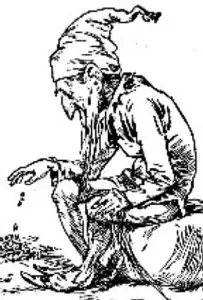
Leprechauns are an integral part of Irish mythology. By profession they are cobblers clad in green suits and waistcoat, bearing a beard, and often smoking a pipe. The dwarfs have some magical powers. They are usually peaceful but mischievous. They collect gold, and each Leprechaun has a pot of gold buried somewhere in the field and would surrender it to a human being in exchange for freedom if caught. A farmer caught a Leprechaun and made him identify the location of the pot of gold, which he did. The farmer tied a red scarf around the tree as an identifier and went home to bring a shovel. On his way back to the woods, the amazed farmer found that the Leprechaun had tied one red scarf around all the trees in the woods. The puzzled farmer could not find the pot of gold.
3. Oisin

Oisin, son of the legendary warrior Fionn Mac Cumhail, was a poet and a Fianna warrior. Hunting on the shores of Lough Leane he saw a beautiful girl riding on a white horse and instantly fell in love with her. She invited him to accompany her to the land of Tir Na N’og which was the land of eternal youth as no one ever grew old there. After living there for three years, he intended to visit his family, but Nimah told him that what he considered 3 years were, in fact, 300 years, and if he ever stepped onto that ground, all those years would return to him. So he rode on horseback cautiously, ensuring not to touch the ground. On his way back, he saw many men trying to move a huge stone which he challenged them to move alone. He did so, but during the act, he stumbled and touched the ground and was transformed to an extremely old man.
4. Finn MacCool
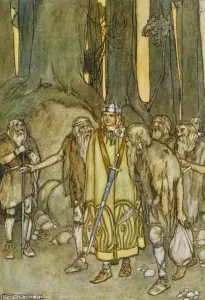
Find Mac Cumail, known in English as Finn McCool, was a mythical hunter warrior. He was the son of the Cumhail, the leader of Fianna. As a boy, he was assigned to cook the salmon fish caught from a pool on Boyne. This fish was said to be the source of all knowledge, and whoever ate that fish would get all the knowledge. While cooking the fish, a few hot splashes and some fish skin fell on his thumb which under a reflex action he put in his mouth to cool. Instantly, he gained all the knowledge. And whenever he needed it in the future, he would suck his thumb and get all the knowledge which he desired to have.
5. Diarmuid & Grainne
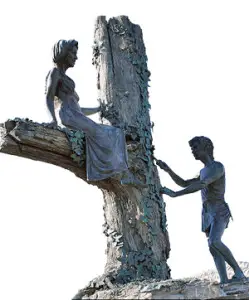
Diarmuid & Grainne is a romantic Irish legend. Grainne, the daughter of Cormac MacAirt, the High King of Ireland, was the most beautiful woman in Ireland. Most prestigious persons including princes and chieftains wanted to marry her. The aging chief Fionn MacCool too wanted to marry her as a second wife, and she agreed to it. To celebrate the engagement, a great feast was given, and there Grainne met Diarmuid and confessed her love to him. Diarmuid refused to accept as he did not want to betray the trust of his chief. Grainne drugged all the guests except Diarmuid and, after casting a spell on him, eloped to the wilderness. During her long elopement she became pregnant, and they were attacked by a wild boar which was killed by Diarmuid but he was badly hurt. They were finally traced by the followers of the chief Fionn who did not accept the request of Grainne to save his life and ultimately Diarmuid had to die.
6. The Children of Lir
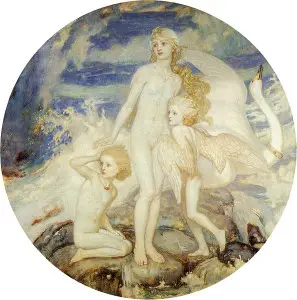
Lir was an Irish king who had four children. After the death of his wife, he remarried, but the new wife was jealous of his children and wanted to get rid of them. One day, while they were swimming, she used a spell to transform them into swans who would never regain their original form until they heard a Christian bell. It was after 900 years that St. Patrick came to Ireland, and the children got rid of the curse and were free to regain their original form.
7. The Goban Saor
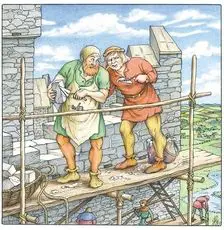
Goban Saor was a legendary Irish architect of the 7th century. According to the Catholic Encyclopedia, he was born at Turvey in the year 560. He was so skillful that he could make a spear shaft before the count of five and could make a spear head with only three strokes of a hammer. He worked for many Irish saints to build churches and bell towers. In 1927, Ella Young wrote a book about Goban Saor, titled The Wonder Smith and His Son comprised of 14 tales and illustrated by Boris Artzybasheff.
8. Bunworth Banshee
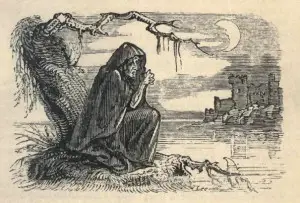
Bunworth Banshee is an Irish legendary woman who is the harbinger of death. She starts wailing, usually at night and near woods, when someone is going to die. It is believed that whoever hears her crying faces death. She is usually seen as an ugly, old woman, at times seen as washing the blood-stained clothes or armor of the people who are nearing death. She had the capability to transform herself into any figure she liked; therefore, she was also seen as a beautiful woman. It is said that just before being murdered in 1437, King James ÃŽâ„¢ of Scotland was visited by a banshee.
9. The Blarney Stone

The Blarney Stone is a blue stone fixed in Blarney Castle located near Cork, Ireland. According to the Irish mythology, whoever kisses the stone becomes eloquent.
‘Tis there’s the stone that whoever kisses
He never misses to grow eloquent;
The name of the stone ‘Blarney,’ literally means ‘eloquence.’ It is said that Cormac Laidir MacCarthy who built the castle was involved in a lawsuit whereupon he sought the help of Godess ClÃodhna, who advised him to kiss the first stone he saw on the way to the court. He did accordingly and pleaded his case eloquently and won. Tourists from all over the world visit the castle and kiss the Blarney stone.
10. Cu Chulainn
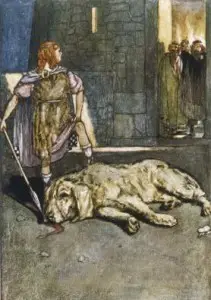
Cu Chulainn was an undefeatable Irish hero who appeared in the Irish mythology like Achilles appeared in the Greek mythology. He was a demigod and was born to the god Lugh at New Grange. Single-handedly he fought the armies of Queen Mebh who put all the soldiers of Chulainn to sleep through her magic. One by one he fought and killed the champions of the Queen till he was wounded by a spear. He tied himself to a stone to keep himself in a standing posture and to show his fitness to the enemy. His strategy worked, and he made the Queen’s army retreat before he succumbed to his wounds.
Conclusion:
It was believed that legends and myths had been transferred by the oral tradition but kept unadulterated and safe from tampering during the transitional stages. Kenneth Jackson remarked about the myths and legends traceable to the Celts as ‘the window on the Iron Age.’










Leave a Reply